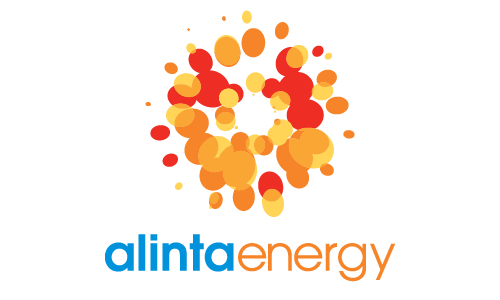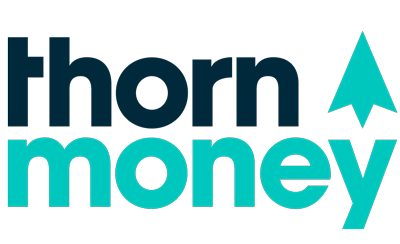100% free & takes under 2 minutes
Home > Energy Plans > Cheap Solar Plans
Looking for cheap solar plans for your home or business? Compare solar plans and feed-in tariffs right here with Savvy
Author
Savvy Editorial TeamFact checked













We’ve partnered with Econnex to bring you a range of energy plans to help you compare them.












We’ve partnered with Econnex to bring you a range of energy plans to help you compare them.






















Looking for cheap solar plans offering the lowest tariffs and highest feed-in rate? With the rising popularity of renewable energy, many providers now offer competitively priced solar plans with attractive feed-in tariffs, allowing you to earn credits for the excess energy you export back to the grid.
Savvy can help you discover the best and most cost-effective options for your solar electricity using our free online comparison service. With just a few clicks you can compare multiple plans, choose the cheapest option and switch electricity providers. Start your journey towards an affordable and sustainable energy solution by exploring cheap solar plans right here with Savvy today!
Finding the best solar electricity plan involves considering several important factors. It’s not only the feed-in tariff (FiT) that you should consider, as that forms only one part of your electricity plan. You also need to think about how much you will be charged for the power you use when your solar system is not generating sufficient electricity for the energy that you are using. Here's how you can go about comparing to find the best solar plan:
Look at your most recent electricity bills to get an idea of your energy usage. Work out how much your current feed-in tariff is, and what you are paying to use electricity from the grid. This will help you compare different energy plans and help you find a cheap solar plan.
Provide a few details about where you live and the type of solar system you have, and using Savvy’s comparison service you’ll soon have multiple electricity plans from some of Australia’s most respected retailers to look at side-by-side. Take the time to compare different solar electricity plans to help you choose the best solar plan for your circumstances.
Evaluate how much energy your solar system will export back to the grid. Compare tariff blocks and check for maximum limits on the amount of power you may be able to feed back into the grid under certain plans.
Look beyond just the FiT and consider the kilowatt-hour (kWh) prices for your power usage when the sun is not shining. Some plans may have different pricing structures for peak, off-peak and shoulder periods. Use the knowledge you have about your household or business usage to work out which tariff structure best suits your usage pattern.
The reference price is a benchmark electricity price set by the Australian Energy Regulator (AER). It estimates the average electricity usage of a similar household in your area. Retailers must tell you how each of their plans compares with the average figure, making it easier to compare electricity prices between different energy retailers and plans.
Read the terms and conditions of each plan carefully. Pay attention to the benefit period, as some offers may have limited-time benefits which only apply for the first few months. Additionally, check for changes in the FiT after the benefit period.
Don't forget to consider any fees associated with the plan, such as connection fees, disconnection fees, early termination fees, or fees for paper bills. These fees can have an impact on the overall cost of the plan. Additionally, consider the daily supply charge, which is a fixed cost for being connected to the electricity grid, regardless of your energy usage.
Check for any available discounts, such as bundle discounts for combining electricity and gas plans, or pay-on-time discounts. Some retailers offer a discount for setting up a direct debit to pay your bill, or for agreeing to a longer contract period on your electricity plan.
Feed-in tariffs are an incentive offered by energy retailers to solar electricity system owners for the excess energy they generate and feed back into the grid. When your solar panels produce more electricity than you consume, the surplus is sent back to the grid. In return, you receive a credit or payment for the electricity you export.
Solar output is measured in kilowatts per hour (kWh), and retailers pay a number of cents for each kilowatt that your system feeds back into the grid. These feed-in tariffs (FiTs) can range from 2c/kWh up to 10c/kWh or more, depending on which state you live in.
Feed-in tariffs are not paid out in cash. Rather, they are applied as a deduction on your regular bill, offsetting the amount charged for the electricity you do use from the grid. Therefore, a higher feed-in tariff will help to reduce what you pay for grid electricity. This is why it’s so important to shop around for the best solar electricity plans.
However, not all retailers will pay a set amount for all your solar output. Some retailers will pay a certain amount for the first block of kWh/day you feed back to the grid, and then a smaller amount for any additional power over the set limit which is fed back to the grid.
Switching to a better solar plan with Savvy is a straightforward process that anyone can follow. Here's how it works:
By following these simple steps, you can easily switch to a better solar plan and start reaping the rewards of clean and affordable energy. Savvy makes the process hassle-free and ensures a smooth transition to your new solar provider.
Every home needs an electricity connection. From powering your fridge to your television, it's important to know the differences between electricity plans before you buy.
Who doesn't love a warm, cozy bedroom in winter or a hot shower on a cold morning? Natural gas helps heat things up in your home, so getting the right gas plan is crucial.
Solar panels are becoming increasingly common as Australians make a sustainable switch. Your connection to the grid is still important for when the sun isn't out, though.
Energy providers are now providing plans to Australians who want to make use of more environmentally friendly sources. These are often known as green energy plans.
It isn't all about homes, though. Electricity and gas are vital for small, medium and large businesses around Australia, so some retailers offer specialist plans to match.
You won’t need to pay a cent to compare a variety of energy plans online through Savvy, as it’s 100% free.
By filling out your form and providing a recent energy bill, you can have all the facts and figures worked out for you.
When you fill out your quote, you’ll be able to consider offers from some of the leading energy providers in Australia.
The average cost of a solar panel system in Australia will vary depending on several factors, including the size of the solar system, the type of installation, and the specific features of the plan. On average, a residential solar system can cost anywhere from $4,000 to $10,000 or more, depending on the system's capacity and quality. Additionally, the cost may be influenced by government incentives, such as solar rebates and feed-in tariffs.
Yes, a solar electricity plan can help you save money on both your electricity and gas bills. If you have both gas and electricity bundled together, some energy providers allow you to use the money you earn from your solar panels (your feed-in tariff payments) to offset the cost of the gas you use. This means you'll have lower bills for both gas and electricity because your solar panels are generating power. It's a smart way to use solar energy and reduce your overall energy costs.
Yes. You have the option to bundle your solar electricity plan with other services to enjoy extra savings. Energy retailers often provide bundle options that allow you to combine your solar electricity plan with services like gas, internet, or home insurance. By opting for these bundled packages, you may benefit from discounted rates or special offers.
Feed-in tariffs (FiTs) are subject to regular change, and it is common for them to be updated annually. The fluctuation in FiTs is primarily influenced by the variations in wholesale electricity prices. These prices can be affected by factors such as market conditions, supply and demand dynamics, and regulatory changes. As a result, energy retailers adjust their FiT rates to align with the prevailing market conditions. It's important to stay updated on the latest FiT rates and review them regularly to ensure you are aware of any changes that may impact your solar electricity plan and the financial benefits you can receive from exporting excess energy back to the grid.
Yes, there are government incentives and rebates available for installing solar systems in many states. Additionally, some state governments and territories offer additional incentives, such as feed-in tariffs and grants, to further support the installation of solar panels. It's recommended to check with your state government to find out what incentives and rebates may be available in your area.
Solar export limiting refers to the practice of energy retailers imposing restrictions on the amount of excess solar electricity that can be exported back to the electricity grid by a solar system. This is typically done through the installation of a device known as an export limiter or export control device. The purpose of solar export limiting is to manage the flow of surplus energy generated by solar panels and ensure grid stability. It helps prevent issues such as voltage rise and overloading of the grid during periods of high solar generation. However, this can potentially limit the amount you can get paid to export your excess electricity back to the grid.
Disclaimer:
Savvy is partnered with Econnex Comparison (CIMET Sales Pty Ltd, ABN 72 620 395 726) to provide readers with a variety of energy plans to compare. We do not compare all retailers in the market, or all plans offered by all retailers. Savvy earns a commission from Econnex each time a customer buys an energy plan via our website. We don’t arrange for products to be purchased directly, as all purchases are conducted via Econnex.
Any advice presented above is general in nature and doesn’t consider your personal or business objectives, needs or finances. It’s always important to consider whether advice is suitable for you before purchasing an energy plan. For further information on the variety of energy plans compared by Econnex, or how their business works, you can visit their website.
Quantum Savvy Pty Ltd (ABN 78 660 493 194) trades as Savvy and operates as an Authorised Credit Representative 541339 of Australian Credit Licence 414426 (AFAS Group Pty Ltd, ABN 12 134 138 686). We are one of Australia’s leading financial comparison sites and have been helping Australians make savvy decisions when it comes to their money for over a decade.
We’re partnered with lenders, insurers and other financial institutions who compensate us for business initiated through our website. We earn a commission each time a customer chooses or buys a product advertised on our site, which you can find out more about here, as well as in our credit guide for asset finance. It’s also crucial to read the terms and conditions, Product Disclosure Statement (PDS) or credit guide of our partners before signing up for your chosen product. However, the compensation we receive doesn’t impact the content written and published on our website, as our writing team exercises full editorial independence.
For more information about us and how we conduct our business, you can read our privacy policy and terms of use.
© Copyright 2024 Quantum Savvy Pty Ltd T/as Savvy. All Rights Reserved.
© Copyright 2024 Quantum Savvy Pty Ltd T/as Savvy. All Rights Reserved.
Quantum Savvy Pty Ltd (ABN 78 660 493 194) trades as Savvy and operates as an Authorised Credit Representative 541339 of Australian Credit Licence 414426 (AFAS Group Pty Ltd, ABN 12 134 138 686). We are one of Australia’s leading financial comparison sites and have been helping Australians make savvy decisions when it comes to their money for over a decade.
We’re partnered with lenders, insurers and other financial institutions who compensate us for business initiated through our website. We earn a commission each time a customer chooses or buys a product advertised on our site, which you can find out more about here, as well as in our credit guide for asset finance. It’s also crucial to read the terms and conditions, Product Disclosure Statement (PDS) or credit guide of our partners before signing up for your chosen product. However, the compensation we receive doesn’t impact the content written and published on our website, as our writing team exercises full editorial independence.
For more information about us and how we conduct our business, you can read our privacy policy and terms of use.
Our consultant will get in touch with you shortly to discuss your finance options.
